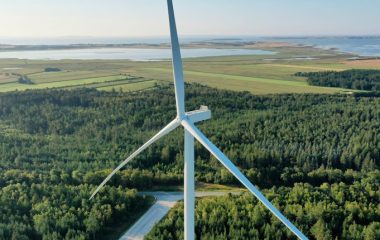
Photo: iStock
An anomaly occurring occasionally in the European electricity market, when prices turn negative and even slump deeply below zero, affected Serbia this time, too. The SEEPEX exchange in Belgrade registered values just above and at zero on Saturday, May 27, for delivery from 10:00 to 17:00 the next day. The Serbian bourse’s Chief Operating Officer Dejan Stojčevski explained that the episode reflects the strength of investments in solar power across the continent, but also the lack of energy storage.
The combination of high precipitation, which bolstered hydropower output, and a mild winter propped up energy supply in the European market this spring. The levels of gas in storage are very high for this time of the year while oil prices have weakened with signs of an economic slowdown.
On top of it all, a period of abundant solar irradiation lifted the production of photovoltaic systems and, together with mild outdoor temperatures, pushed power prices drastically lower and in some cases deep into negative territory. One of the main factors was that snow melt in Scandinavia overflowed hydropower reservoirs.
Negative prices were observed in China as well – sellers in power exchanges sometimes pay the other side to consume their electricity so that they avoid penalties for disturbing the balance in the system
The surge in solar power investment brought consecutive records in production in the sector throughout the continent. Negative prices were observed in China, too. Solar and wind power plants are especially sensitive to meteorological instability so prices on some electricity bourses reached the lowest levels so far, as much as several hundreds of euros per megawatt-hour.
It means that the seller actually pays the buyer to take electricity. The phenomenon happens usually on weekends and holidays, when demand is lower.
Negative prices are impossible in Serbia, for now
Day-ahead market prices at the Serbian SEEPEX exchange slumped to just a few cents per megawatt-hour on Saturday, May 27, for delivery from 10:00 to 13:00 and flatlined at zero for the following four hours. Air temperatures in April and May are often such that there is no need either for heating or cooling, so the extremes of this type occur a few times per year, the bourse’s COO Dejan Stojčevski explained for Balkan Green Energy News.
The phenomenon where electricity prices drop to zero and below can be prevented with storage systems such as batteries
Electricity prices spill over to other markets and they tend to equalize everywhere in Europe, regardless of whether there are any investments in solar power, he asserted. Stojčevski pointed out that there are penalties for producers in some markets for disturbing the balance in the system and that the cost is higher than paying someone to take surplus electricity.
However, negative prices aren’t allowed in Serbia without legislative changes that would regulate value-added tax, SEEPEX’s head of operations explained. “We are late in everything, so in that as well,” he stated. Such situations will be repeating until energy storage solutions become more widespread, Stojčevski added and stressed that prices used to be the lowest in the night.
Investors asking for damages
When transmission grids can’t accept all available solar and wind power, their operators disconnect the capacities that they have under control with automatic systems, to avoid overload.
Compensation requests are becoming louder. For instance, Cyprus Wind Energy Association, CWEA, demanded from the government in mid-May to pay damages. Stojčevski commented that the tendency is to change the rules so that solar and wind facilities can be cut off without compensation.
Consume when it’s cheap
Photovoltaics are increasingly shifting the balance in the market. The networks and conventional systems like cogeneration and gas-fired power plants will need to be upgraded to react more swiftly to swings in production.
It doesn’t make sense for prices to be negative, especially because it can deter investors from electricity generation projects. But the worst solution is to disconnect solar and wind power plants if there is any demand left. It is why, given the rapid growth in such capacities, implying intermittence in supply, the development of the electric power system is largely based on adapting demand to production – demand response.
With new digitalization and flexibility technology, both companies and households can turn the situation to their own advantage. Consume (maybe even earn) when the production is too high and abstain from using electricity when prices are high.









Sunt din romania și doresc sa pun și eu panel electric la casa .Se poate?
Mulțumesc